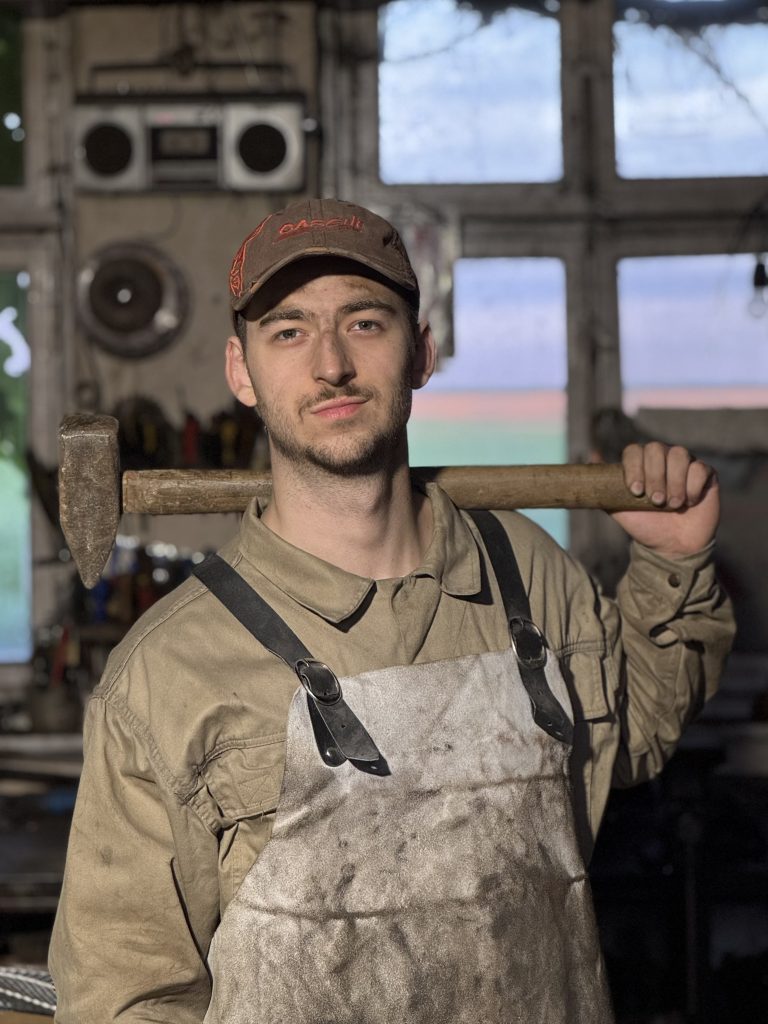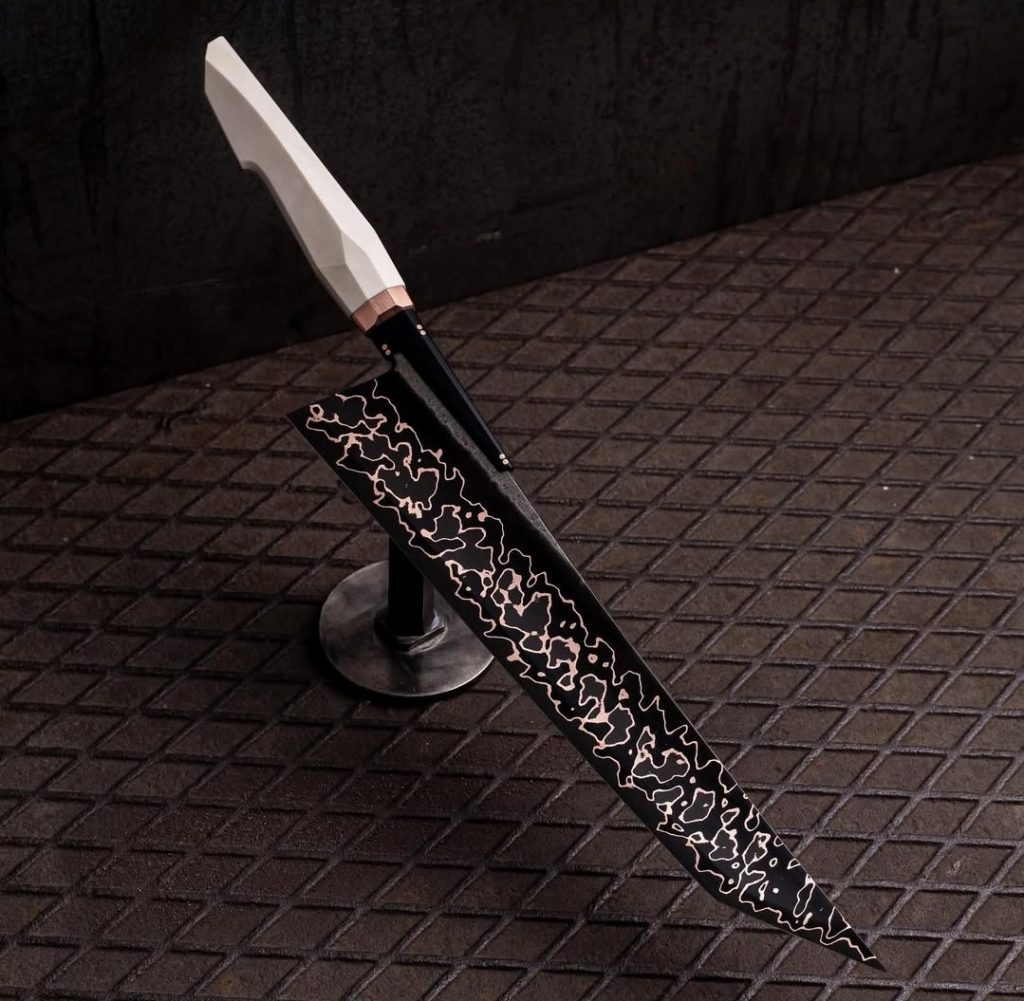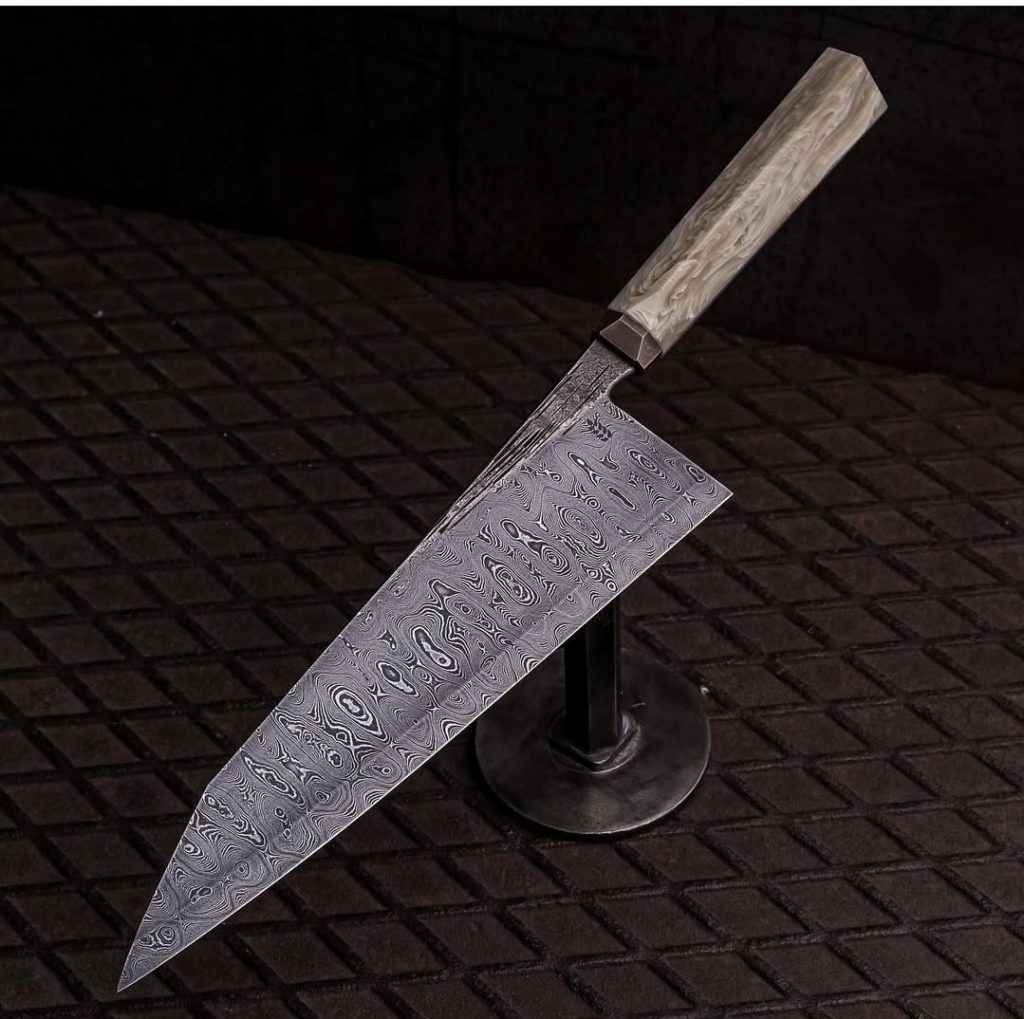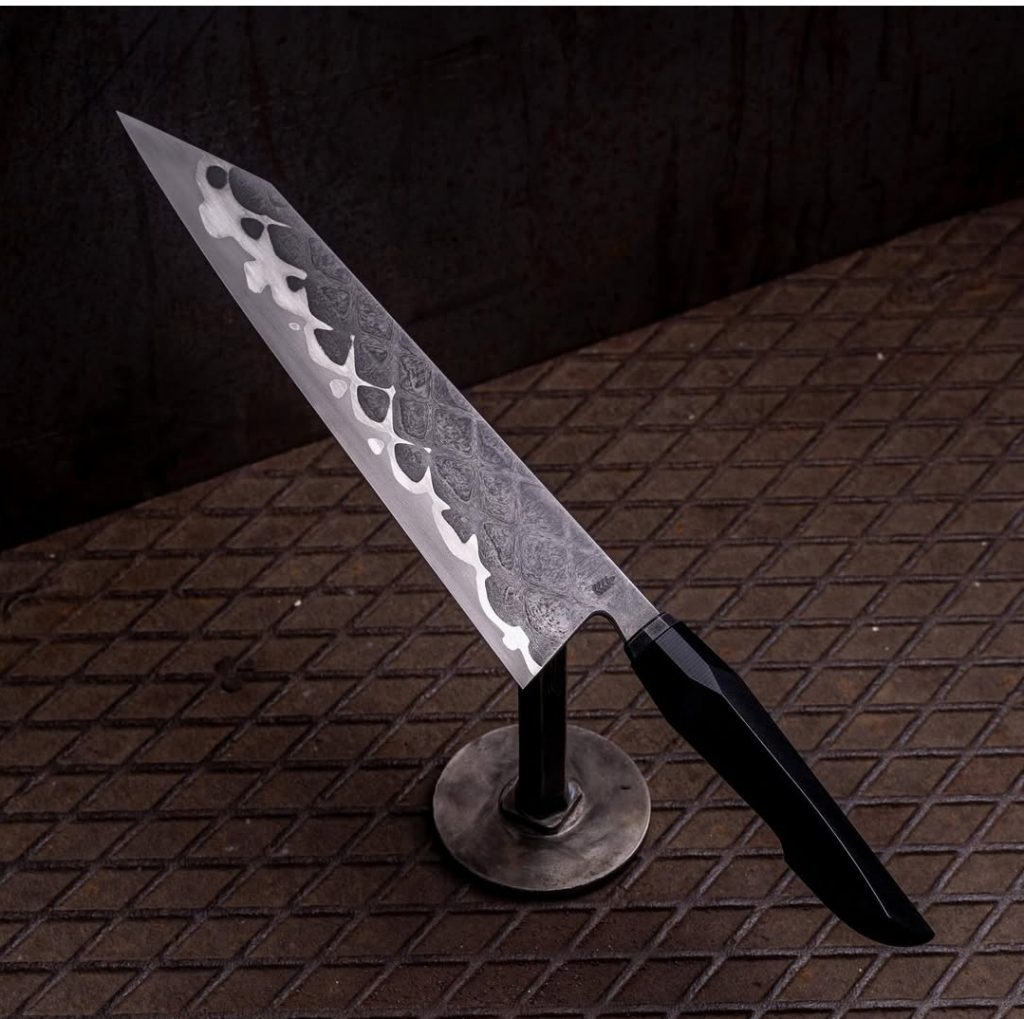
This week’s interview takes us to Poland. I have been following this younger maker’s work for a couple of years now, but it has been a privilege getting to know him. Everything we build relies on a strong foundation. And he had by all accounts a great foundation, I look forward to seeing his work for years to come.
To start off, please tell us a little about yourself.
Hi everyone, I’m Ksawery Szymczak. I live, study, and make knives in my homeland—Poland. I’m currently 22 years old and pursuing a degree in materials science to better understand the processes behind knifemaking. During the week, I’m based in the city for my studies, but weekends are dedicated to knifemaking back home on our family farm. Time is limited, but I’m not complaining—it’s a balance I’ve grown to appreciate.
What sparked your interest in knives?
My passion for knives began about six years ago, though it became serious around 3–4 years back. At the time, I had too much free time and a bit of a YouTube addiction—which eventually led me to discover knifemaking videos. I was hooked. Luckily, we had an old repair workshop on the farm, complete with an anvil, a coke forge, and some basic tools. After burning through a few pieces of steel, I eventually made something that actually resembled a knife. My very first blade was crafted with an angle grinder, a file jig, and a whole lot of elbow grease. From that moment, I knew this passion wasn’t going anywhere.
Not long after, my parents—who had been quietly observing—offered to buy me my first professional belt grinder. That support meant a lot, and I’m incredibly grateful. They’ve encouraged me from the very beginning.
Do you have a favorite knife you made, tell me about it?
If I had to pick a favourite knife I’ve made, it would be a recent custom commission: a long sakimaru slicer in dark cu-mai steel with an S-grind, a copper ferrule, and a sculpted faux ivory handle—plus a collar piece I’ll come back to in a moment. This build pushed me on every level. It was the largest blade I had forged to date, but the core ended up perfectly centered and the pattern turned out just right. The heat treatment went smoothly—despite my fears of major warping—and the grind was especially challenging. Pulling off the transition between the hollow grind and the sakimaru tip was nerve-wracking, but somehow, it all came together. Then came the handle. The client proposed adding a collar piece between the blade and handle—something I initially wasn’t too excited about. I voiced my concerns, but we decided to give it a try. After a few failed attempts (third time’s the charm!), we ended up agreeing that it was actually the standout feature of the whole knife.

What is the most important aspect of a well-made knife?
For me, geometry is the most important element in a knife—especially kitchen knives. Geometry dictates how a blade feels in use, how it cuts beyond that first incision, whether it glides or wedges, and how it releases food. You can make a blade out of Rex121, sharpened to 10 DPS, but if the geometry is poor, the blade will still perform poorly. I personally gravitate toward S-grinds—I love their effortless cutting feel and exceptional food release. They also play beautifully with the laminated patterns I work with, and let’s face it—aesthetics are just as much a part of the knife as performance.
What keeps you going?
What keeps me motivated is the endless stream of new ideas that pop into my head. New materials, techniques, and tools all drive my curiosity. They’re deeply connected. Right now, I have a few ideas that are waiting on the back burner until I finish the current batch of custom orders.
Biggest struggle?
My biggest challenge? Without a doubt—social media. It might not seem critical at first glance, but it’s inseparable from modern knifemaking. I struggle with consistency, only post on Instagram, rarely do reels, and I’m not great at documenting my process. It may seem minor, but without social media, I wouldn’t be where I am today. Content creation isn’t my strength (yet), but I’m working on it—and I’m lucky to have an incredible group of customers who look past my quiet feed and continue to support my work.
What kinds of knives do you make?
While I now focus almost exclusively on kitchen knives, I’ve dabbled in other types too. I’ve made a few bushcraft knives—probably like most makers starting out—along with two razors for commissions. I haven’t tackled it yet, but I’m really eager to try folding knives, especially liner or frame locks. Still, it’s the kitchen knife that stayed with me. There’s something about the subtle challenges and refinements they demand that keeps me coming back.
Who helped you early on?
I owe a lot to my parents. They’ve been behind me from the very start—offering space for my workshop, gifting me that first grinder on my 18th birthday, and proudly sharing my work with family and friends. I also owe a great deal to Wojciech Król (@krolcustomworks), who introduced me to forging. Until I met him, all my knives were made using stock removal.
Who are your influences?
In terms of influence, I’ve long admired the work of Don Nguyen and Will Stelter. Don’s designs had a huge impact on my early work, and while I’ve since found my own style, his influence still lingers. Will, on the other hand, is just a phenomenal bladesmith—I admire his forging skills and his sharp, fluid aesthetic. His vibrant Damascus work is incredibly inspiring. More recently, I discovered Gabe Fletcher (@anchorageforge), and I’ve been amazed by his organic mosaic Damascus patterns. The complexity of reverse-engineering even one of his pieces still blows my mind. Pure art.

Any specific breakthroughs or revelations in your knife making journey?
A major breakthrough in my journey came when I acquired and converted an old industrial 40-ton press into a forging press. It’s a heavy-duty beast—built to handle abuse. That press opened the door to laminated steel work, a process I learned from Wojciech. The learning curve was steep, but once I understood it, I couldn’t stop. Then came my spring hammer… and the journey continued.
How do you approach knife testing?
When it comes to testing my knives, I follow a kind of “standard procedure.” For food release, I reach for potatoes—they’re also good for detecting wedging. Carrots give a better sense of wedging force. Onions are great for testing precision and chopping feel. If something feels off, I correct it—preferably with whetstones. If things are way off (rare, thanks to countless hours in the grinding room), I’ll return to the belt grinder. For sharpness, I use the paper and paper towel test. If it passes, I’m happy.
What are your favorite steels?
On the steel side of things, it’s pretty straightforward. For carbon steel, I almost exclusively use ApexUltra—its edge retention and toughness make it a go-to for most of my work. For stainless, I love AEB-L. It behaves so much like carbon steel—both in the shop and in use—but with the benefit of corrosion resistance. I’ve experimented with steels like M390, K390, and MagnaCut, but for 95% of my knives, ApexUltra and AEB-L deliver exactly what I need. As for heat treatment—it’s a topic of its own. I rely on trusted sources, like Dr. Larrin Thomas from Knife Steel Nerds, and I follow manufacturer guidelines. You can’t reinvent the wheel, but when possible, I do incorporate cryogenic treatment into my process.

How do you develop a design, select a steel, and fine-tune a heat treatment?
My design approach varies. Some days I carefully sketch everything out—other days I just wing it. That said, certain elements appear in nearly all my knives: sculpted handles, S-grinds, museum-fit ferrules, and clean, simple blade profiles. I know a knife is right when I feel it’s right.
How has the knife world changed since you started?
The world of knifemaking is constantly evolving. One of the biggest moments in my career was discovering and adopting copper laminated steel—today, it forms the basis for over half of my blades. It captivated me instantly. On the flip side, a less welcome change has been the way Instagram now handles maker content—frequent post flagging, shadowbans, and limited reach. At times, it has been brutal. Still, things seem to be improving, slowly but surely. I’m especially grateful to my customers who helped keep me going during those tougher moments.
What’s up next for you? Any exciting new projects to tell us about?
Looking ahead, I have a lot on my mind! I want to explore the world of mosaic Damascus steels—there are some patterns I’m eager to try. On the opposite end of the spectrum, I also want to create a production line of knives—more affordable than my custom work, but with no compromise in performance. I won’t spoil too much, but I’m really excited about the possibilities. Lastly, I’ve designed a folding knife—and I hope to finally bring it to life.
To see more of Ksawery’s work check him out on Instagram at http://www.instagram.com/ks_blades
Leave a Reply